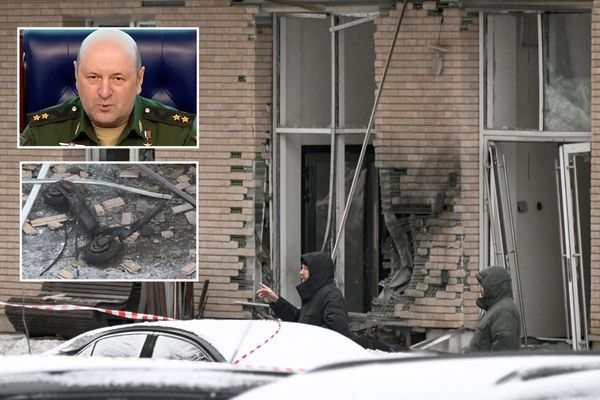
A fast-moving story with claims and counter-claims from historically unreliable sources; a profoundly polluted information environment across the social media platforms; a weakened US-centric old media news supply chain — good luck making sense of the war in the Middle East.
The brutality of the Hamas attack on southern Israel and the response by the Israel Defense Forces have arrested the world’s attention. But where can we turn to get any real sense of what is happening and why?
You’re not alone in your confusion. As The Economist’s Middle East writer Gregg Carlstrom caveated this week: “Also just to add a note of humility to what I’ve been writing for the past few days: I don’t know what the fuck is going on, no one does, we’re all trying to figure this out in real-time. Covered this region for a decade and a half, cannot remember a time everyone was so confused.”
Looks like a redux of the war in Ukraine: it’s the independent on-the-ground journalist-run news media — much of it new — inside Israel that now offers the best chance at an inside look. As the old Twitter warning goes, sharing doesn’t mean endorsement; for me, these are a starting point to explore the situation from different journalistic perspectives that may help start to capture the complexity of the country.
And lest we forget, journalists on the ground are doing a deeply dangerous job: the thousands already killed in the war include 12 journalists — from both Israel and Gaza — with another two missing.
Among the best-known outlets is Haaretz. It’s been able to combine its traditions as the country’s longest-lasting newspaper (since 1918) with an enduring enfant terrible approach to the Israeli establishment. If you’ve heard anything from inside the horror of the Hamas attack, it would have been from their reporter Amir Tibon, whose frightening report headlined “My 62-year-old Dad Fought Hamas Terrorists to Free My Family” came with the very Haaretz kicker “The Israeli State Failed Us”.
Right now, the masthead (despite its soft paywall) is the go-to for a critical understanding of the sudden shifts in Israeli politics and what they mean for the region. Its Sunday editorial punched hard: “Netanyahu Bears Responsibility for This Israel-Gaza War”, saying the right-wing leader had “completely failed to identify the dangers he was consciously leading Israel into when establishing a government of annexation and dispossession”.
For a less establishment, more bottom-up take, there’s the English-language +972 Magazine, an online publication named for the international dialing code for Israel and Palestine and aimed at a global audience. It was launched following the 2008-2009 Gaza War by a collective of Israeli and Palestinian journalists as a shared blog, before growing into a professionally written and edited reporting hub for collective members which, it says, ”puts the occupation front-and-centre, highlights various grassroots political and social struggles and elevates voices and perspectives that simply aren’t being heard anywhere else”.
This week, it’s leading with an analysis of “The end of the Netanyahu doctrine”, the idea that Israel can achieve peace without the Palestinians. Its executive director Haggai Matar (@Ha_Matar on the platform formerly known as Twitter) has been interviewed and republished across US progressive media this week.
In 2014 (following another Gaza war), the magazine collective joined with two other civil society organisations to found a local news site in Hebrew titled Sikha Mekomit (“Local Call”) funded through memberships and donations. They report on social issues (like housing or crime) with a particular focus on their impact on the Occupied Territories and the Arab minority within Israel.
The big shock of the invasion has been the collapse of Twitter as a useful (if often frustrating) source of real-time news. It’s astounding to contrast the role Twitter played in identifying and promoting news in the early months of the war in Ukraine just last year, with the confusion of the post-Musk platform in the Israel-Hamas war today.
Among the morass that is the site now branded as X, +972 journalists are collating and sharing (without necessarily endorsing) — like co-founder Lisa Goldman, or Amjad Iraqi who published a Palestinian viewpoint in the London Review of Books this week, saying “Palestinians are watching all this with a mix of astonishment and paralysing fear.”
This looks shaped to be the war where misinformation and disinformation have finally overrun the capacity (or indeed the willingness) of social media platforms to police it. On his Substack Garbage Day, Ryan Broderick wrote: “I tried to keep track of what I was seeing online this weekend from Israel and Palestine. And it has been, of course, impossible to follow anything”, concluding that “content moderation is a failed project”.
Labouring away in the misinformation mines, open source intelligence analyst Bellingcat has warned that “viral social media posts have presented years-old footage, or footage from entirely different conflict zones, as depicting the latest Israeli bombing of Gaza”, while the European Union has warned X about violent and terrorist content on its site.
The ABC has continued its long history of strong reporting from the region, bolstered with contributions from John Lyons, whose 2021 book Dateline Jerusalem explained why, as it was subtitled, reporting from the region is “Journalism’s Toughest Assignment“.
Most of what we see comes from the reporting from global broadcast media which is heavily shaped by a US-centred view, although the broadcasters are offering one of the few opportunities for us to hear the voices of journalists from inside Gaza, particularly through the BBC.
But the medium is doing what it’s long done best: conveying the violence and horror of war, particularly for civilians on both sides and capturing the emotional humanity – the fear, despair, shock, horror, mourning – of all the people caught in between.







